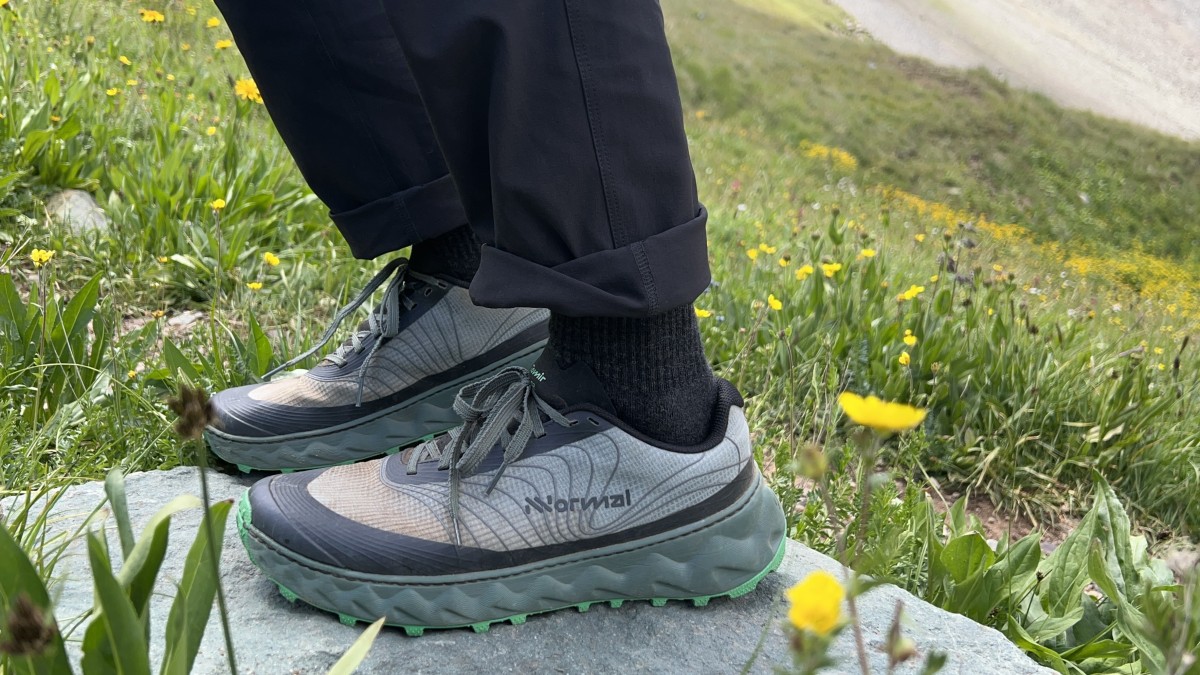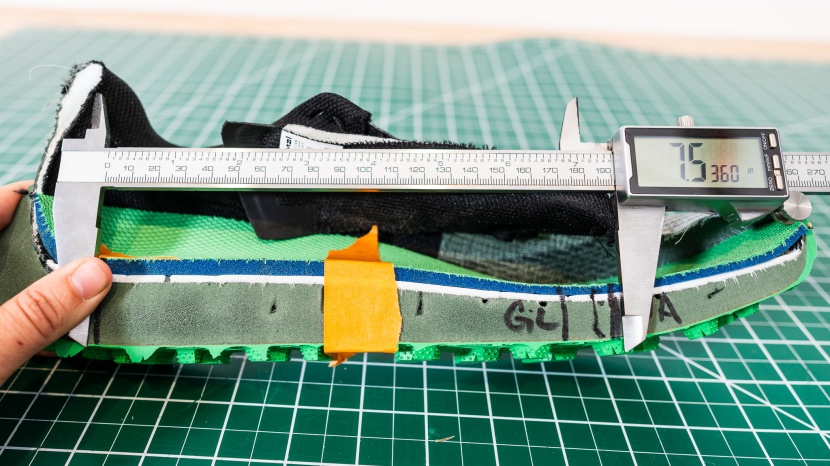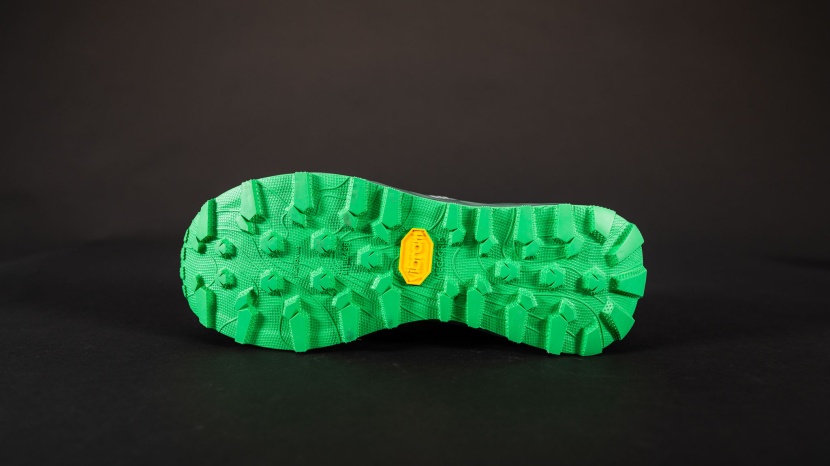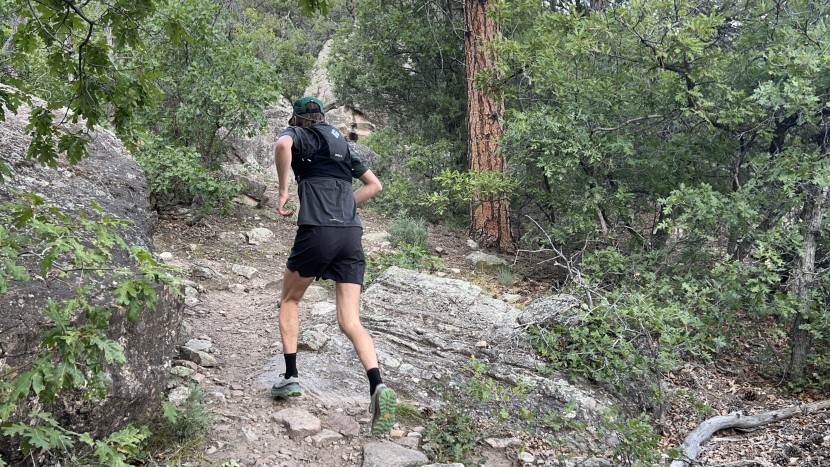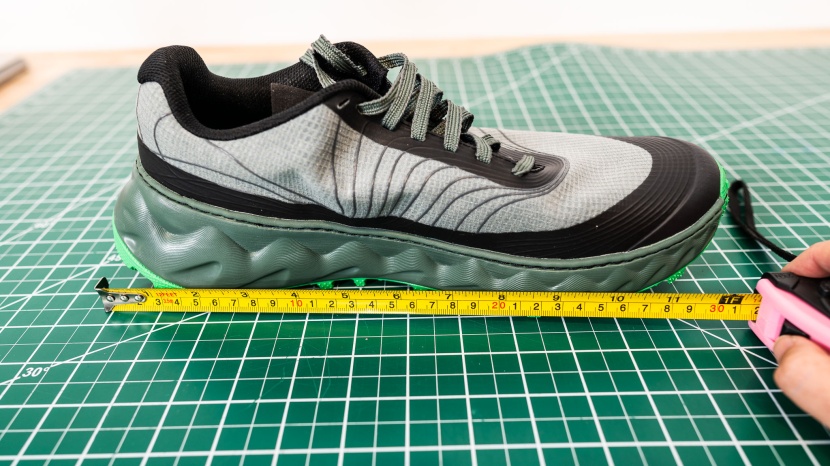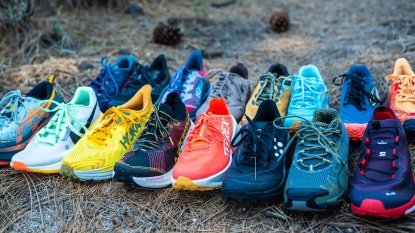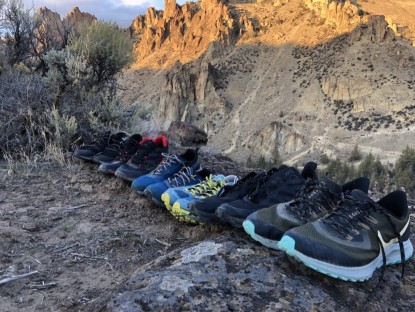
Our Verdict
Our Analysis and Test Results
The Tomir 2.0 has one of our all-time favorite midsoles, the EExpure. Weighing 10.84 ounces per shoe (US men's size 10.5) and with a measured heel-toe drop of 12 mm and 5.0 mm lugs, this shoe is great all around but really excels on subpar terrain. We think a rotation of the Tomir 2.0 and Nnormal's Kjerag fits everything you'd encounter out on the trails, and it's our personal favorite combination.
Comfort and Fit
Our testing proved the Tomir 2.0 to be a largely unflawed shoe — until we analyzed the fit. While we hoped the fit of the Tomir would be the same as the Kjerag but, unfortunately, that isn't the case. Lacking from the Tomir is the midfoot/arch lockdown that is so useful in the Kjerag. When descending steep terrain, our feet tended to slide forward. This issue is exacerbated by the slippery insole used. We loved the lack of an insole in the Kjerag, so we were surprised to find that Nnormal added one in the Tomir. You can't even remove it due to the stiffer stitching underneath the insole — much different than the Kjerag.
The volume of the shoe felt mostly correct, although we think a little space could be removed. Once we ran more in the Tomir, the Matryx upper conformed more to our foot, but we could never get the slipping to go away entirely. The shoes were sized correctly with subtle space between the toe bumper. The model excels on technical terrain, so it was a bummer for them to feel limited fit-wise. Our team talked to others who run in these shoes, and found similar thoughts were shared. Some even opted to run barefoot to provide more friction to the insole! This isn't a dealbreaker, and we still love the model, but this needs to be addressed before we feel this shoe could be truly award-worthy. Still, the Tomir has a lot going for it, and it's still high on our list of recommendations.
Stability
We figured the Tomir would hold up well in technical terrain after hearing that world-renowned trail runner and Nnormal cofounder Killian Jornet was using it for his latest 4000-meter peaks project in Europe. The shoe is soft enough to feel light and free but dense enough to provide support on off-camber terrain and rocky features. Even with the higher stack, we never felt our ankles suffered much fatigue. Using the Tomir still requires you to recruit your ankles, knees, and hips, but doesn't require as much precision and focus as the Kjerag.
Traction
Second only to the Salomon Speedcross 6, the Tomir 2.0 excels in technical terrain. The deep 5 mm lugs and grippy Vibram LiteBase outsole are a perfect pairing, offering exceptional traction that doesn't slow you down. Sporting one of the more unique lug patterns, we found they provide great ground feel on hardpack and in technical terrain. The EExpure midsole does a great job deforming around different terrain features, providing confidence-boosting traction. The Vibram LiteBase outsole also does a great job of shedding mud due to the hardness of the material. The hard perpendicular lugs do a spectacular job in softer conditions like grass.
Foot Protection
We took the Tomir 2.0 into all different types of terrain, and we always left with our feet feeling fresh. There is ample stack in each shoe (we measured 36 mm), and their blend of cushioning and rigidity helped to stop or put a damper on most unwanted impacts from trail debris. The toe cap isn't substantial, but the overall taller stack height helps a lot. On talus and off-camber terrain, the shoe does well, finding itself right at home in rocky environments.
Weight
We measured this shoe at 10.84 ounces per US size 10.5. We think this gives the Tomir 2.0 an impressive amount of comfort and protection for their weight. These feel especially good in technical terrain, and this lower weight leads to confident footstrikes. It's clear that Nnormal produces the lightest shoes possible, and this overall design philosophy is apparent in all their shoes we've tested. The Tomir even feels comfortable on the road — and we never felt bad about using the Tomir in less technical terrain.
Should You Buy the Nnormal Tomir 2.0?
The Tomir 2.0 is one of our favorite shoes in our lineup, and it outscores most of the competition. Our only hesitation would be if you plan to race downhill on technical terrain, as sliding forward in these shoes limited our confidence in them by about 20%. If you aren't planning on racing or giving 100% on the downhills, we think absolutely these are worth buying. If you need a great all-around trainer, especially one that excels in the alpine, the Tomir 2.0 is a great option.
What Other Men's Trail Running Shoes Should You Consider?
If you require more lockdown in technical downhill terrain, we'd recommend the Nnormal Kjerag. If you're looking for a model that goes between the Kjerag and the Tomir 2.0, check out the Norda 002.
| Awards | |
|---|---|
| Price | $180 List Check Price at Backcountry |
Overall Score  |
|
| Star Rating | |
| Bottom Line | Unmatched in technical terrain with an incredible midsole, we wish the fit was adjusted a bit to prevent slipping forward when descending |
| Pros | Extremely versatile midsole, durable, great traction in dicey conditions |
| Cons | Midfoot loose when descending steep terrain, thin laces |
| Rating Categories | Nnormal Tomir 2.0 |
| Comfort and Fit (40%) | |
| Stability (25%) | |
| Traction (15%) | |
| Foot Protection (15%) | |
| Weight (5%) | |
| Specifications | Nnormal Tomir 2.0 |
| Measured Heel Stack Height | 36 mm |
| Measured Heel-to-Toe Drop | 12 mm |
| Rock Plate | No |
| Measured Lug Depth | 5.0 mm |
| Measured Weight | 10.84 oz |
| Upper | Monofilament polyester + TPE |
| Midsole | EExpure midsole |
| Outsole | Vibram Litebase |
| Sizes Available | 4.5 - 12.5 US regular |
| Heel Tab Type | None |
| Claimed Heel-to-Toe Drop | 8 mm |


